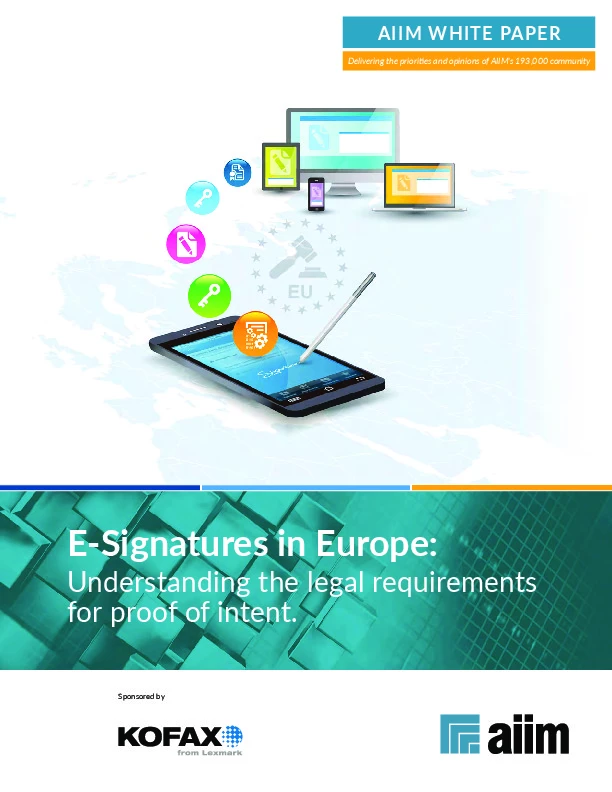E-Signatures in Europe: Understanding Legal Requirements for Proof of Intent
Add bookmark
Whether customers or employees, the habit of printing out documents to capture a signature for proof of intent is hard to break. And yet it feels increasingly odd and slows the business process significantly.
Despite the fact that E-Signature technology is more than two decades old, adoption of paperless signing has been slow, and multinational businesses seeking a standardized E-Signature solution have found substantial disparities across Europe.
Changes in regulations and advancements in technology mean it is time to have a new look at E-Signature options for proof of intent in Europe – particularly given the trend to integrating signatures into digital workflows, and the increasing use of smartphones and tablets.
Effective July 1st 2016, EU Regulation 2014/910 (eIDAS) is in force. This Regulation is directly applicable in all 28 EU member states without the need to be transposed into local law. It comes with much needed streamlining of E-Signing terminology, making it easier for businesses to identify which E-Signatures are relevant to their business.
Find out more...






















